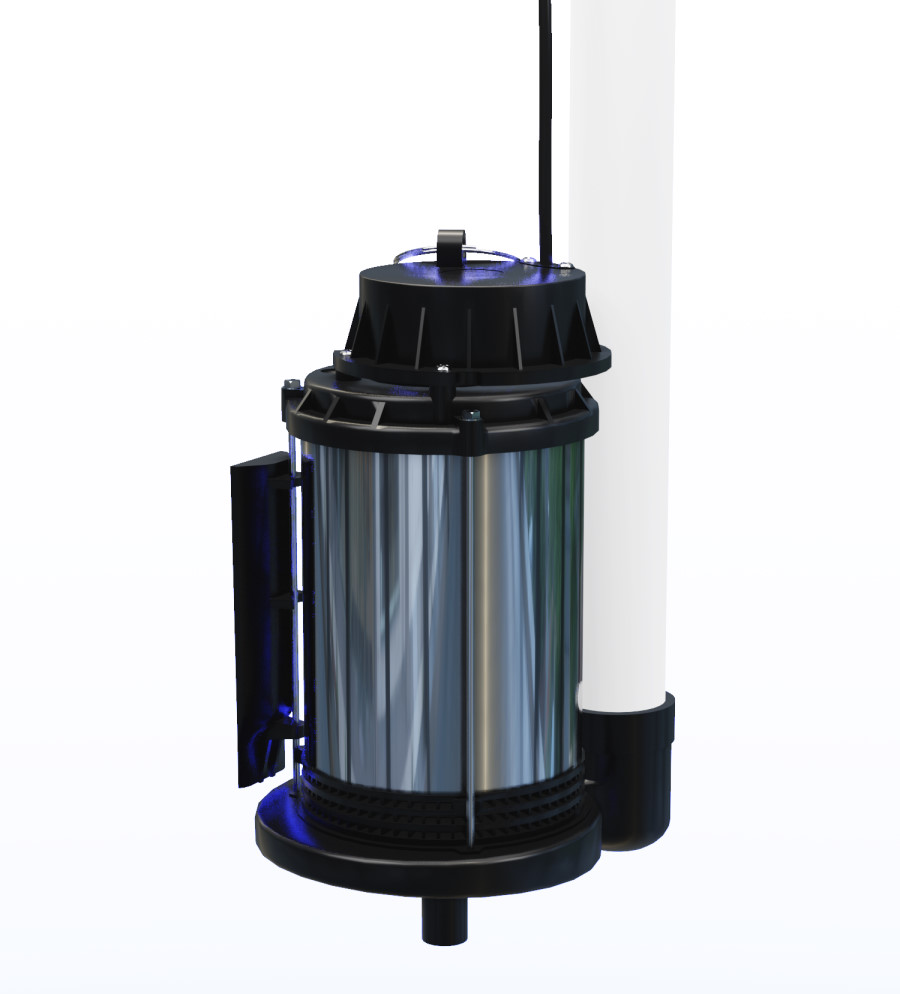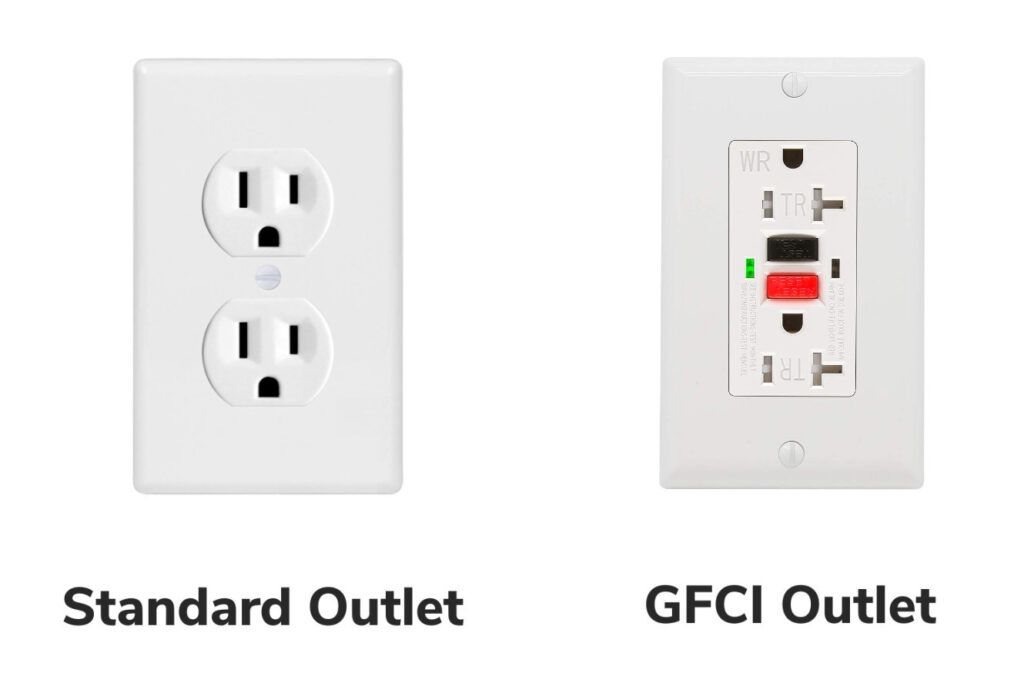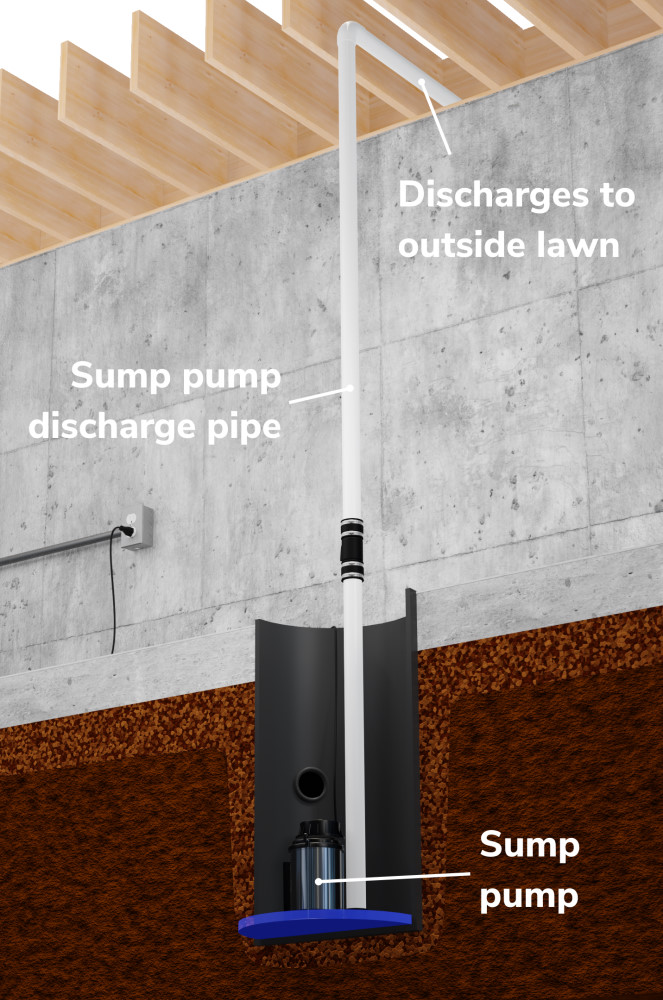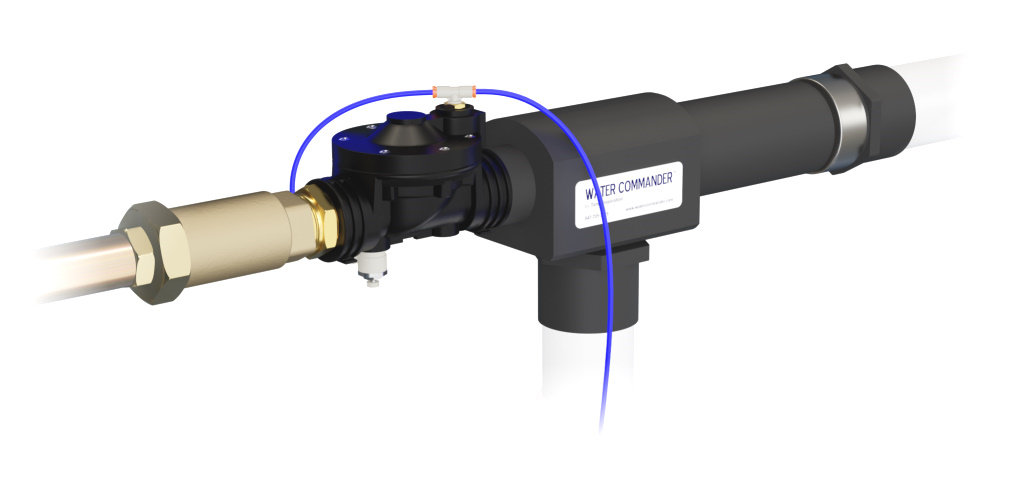There are a number of reasons why your main electric sump pump won’t run.
If your primary sump pump is not working, it’s important to diagnose and fix the problem before your basement floods. Some issues are temporary or can be easily resolved, while other problems require replacing the entire pump.
These problems include no electricity, tripped breaker or GFCI outlet, sump pump switch failure, clogged impellor/intake screen, blocked discharge pipe, no weep hole, or burned-out pump motor.
Even if your sump pump is brand new, it will only run as long as you have electricity. Once the power goes out during a storm, your basement can quickly flood. That’s why a backup sump pump is essential in addition to your main pump. Water Commander™ backup sump pumps are powered by your home’s municipal water pressure, so they keep pumping even in a power outage and don’t suddenly die like battery backups. Learn more here.
No Electricity
Loss of electrical power is the simplest and most common reason your sump pump will stop pumping. Once your home doesn’t have electricity, your main sump pump won’t run until the power is restored. If the power is down for more than a couple minutes, this can lead to basement flooding during a rainstorm. The average U.S. home was without power for more than 4 hours in 2016, but you could be out much longer than that during a bad thunderstorm.
However, if you have a reliable backup sump pump like Water Commander™, you will still be protected when this happens. Once the water rises above the main sump pump switch, the Water Commander will automatically turn on and will keep running until the sump pit is emptied.
Tripped Breaker or GFCI Outlet
Even when your electricity is on, your main breaker could trip without you realizing it. In this scenario, you wouldn’t even realize your sump pump isn’t running until it’s too late. If the circuit your main sump pump is on has several other items drawing current (lights, appliances, etc.), the breaker can overload and pop since more electricity is running through the circuit than it can handle. The sump pump is still functional, it just won’t run until the breaker is reset and electricity is restored to the outlet.
Sump pumps with a larger motor (1/2 HP for example) may draw too much current for your breaker. Check the amperage of the circuit and make sure it’s appropriate level for the sump pump you plan to use on that circuit.
If your electric sump pump is connected to a GFCI outlet, it can trip and disable the outlet until it is reset. When the sump pump starts up, the initial surge can overload the outlet and cause it to trip. The National Electrical Code (NEC) now requires a GFCI outlet for sump pumps, making it required for all new construction. This is safer than a standard electrical outlet, but also leaves you susceptible to flooding and is a good reason to have a backup sump pump.
Sump Pump Switch Failed
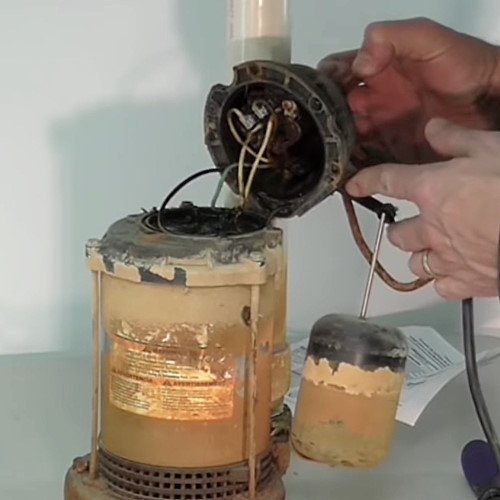
The most frequent cause for a malfunctioning sump pump is a failed pump switch. We’ve heard this over and over from plumbers we talk to. It’s often due to the electrical connection failing, rather than a problem with the float mechanism itself. Although in some instances this can be reparable, it’s often easier to replace the entire sump pump.
If the switch becomes stuck, this also will prevent the pump from running. The first thing is to look into the sump pit and make sure the switch is free to move up and down. Sometimes it may simply be blocked or there’s mineral/dirt buildup preventing it from freely moving. If there’s excess calcium or other minerals caked around the float, soaking it in vinegar will help clean it up.
Clogged Impellor or Intake Screen
Dirt and gravel at the bottom of the sump basin can be sucked into the sump pump’s impellor and become lodged there, preventing the impellor from spinning. When the pump turns on, if you hear the motor running but no water is being pumped, the impellor or intake screen may be clogged. Remove any debris from around the screen and impellor before trying to run the pump again. (This 1 minute Youtube video explains how.)
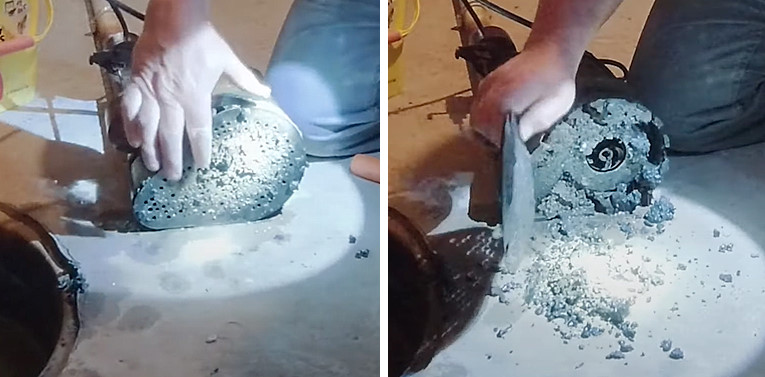
Blocked Discharge Pipe
In addition to cleaning out around the pump impellor, regularly check the discharge pipe to ensure it’s not blocked. A pipe filled with dirt, leaves, or rocks will either slow the pumping speed or completely block the water flow through the pipe. During winter, frozen water can also completely stop up the discharge pipe. Whenever the pump runs, it should discharge the sump water into an area with proper runoff so that it will not pool or flow back into the pipe.
No Weep Hole
If your pump was recently installed, make sure there is a weep hole (a small vent hole) between the pump and the check valve on your discharge pipe. A weep hole prevents air from getting trapped in your pipe and causing a flow restriction. An airlock can prevent your sump pump from pumping and will quickly burn-out your pump motor.
Burned-Out Pump Motor
If your pump has been trying to run but is blocked by debris in the intake or discharge pipe, this can lead to a burned-out motor. It has to work harder than normal to pump, which causes the motor to overheat and eventually fail. Your motor can burn-out if it is underpowered for your sump as well. Even under normal use an electric sump pump’s motor has a limited life and eventually the entire pump will need to be replaced.
You Need a Backup Sump Pump
To avoid a flooded basement when you lose power or your electric sump pump suddenly stops working, get yourself a backup sump pump. If you want a backup pump that is powerful and will keep running as long as it’s needed, consider Water Commander™.
Instead of using batteries or electricity, Water Commander runs on your home’s municipal water pressure to quickly empty your sump pit. It can meet or even exceed the pumping speed of your electric sump pump. Water Commander model MG22 pumps up to 30+ GPM and the model MG36 pumps up to 45+ GPM.
Because Water Commander™ uses your home’s water pressure, it will always run at full power whenever needed and never die during a power outage like battery backups. Our video below shows this backup sump pump works, and check out the rest of our website for more information.
Looking for a quality backup sump pump?
Water Commander™ is the best backup sump pump system available on the market today. It’s non-electric, can out-pump your electric sump pump, and will run at full power for years to come.
It is more reliable than battery backups and is the perfect solution for homes with municipal water.
Top Posts
- Water-Powered vs Battery Backup Sump Pumps
- How Long Does a Backup Sump Pump Battery Last?
- Water-Powered Backup Sump Pumps: Ultimate Guide
- How Do Water-Powered Sump Pumps Work?
- How Much Water Does a Water-Powered Sump Pump Use?
Recent Posts
- How To Measure Your Home’s Water Pressure
- Why Is My Sump Pump Not Working?
- How to Prevent Basement Flooding
- Battery Backup Sump Pump Troubleshooting Guide
- My Battery Backup Sump Pump Alarm Won’t Stop Beeping (Fixes)
Categories
Tag Cloud
Alarm Backup Sump Pump Batteries Basement Flooding Beeping Bernoulli Principle Best Sump Pump Check Valves Crawlspace Discharge Pipes Drain Tiles Ejector Jet Float Assembly Independent Discharge Municipal Water Perforated Sump Pits Power Outages Primary Sump Pump Failure Pros and Cons Pumping Charts Pumping Efficiency Pumping Rates Pump Life Span Pump Run Time Pump Testing Radon Gas Suction Pipe Sump Basin Sump Pump Motor Sump Pump Switch Troubleshooting Ultimate Guide Venturi Effect Water Drainage Systems Water Pressure Water Pressure Gauge Water Usage
